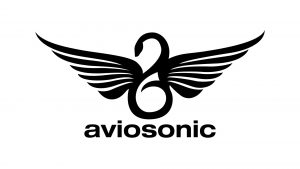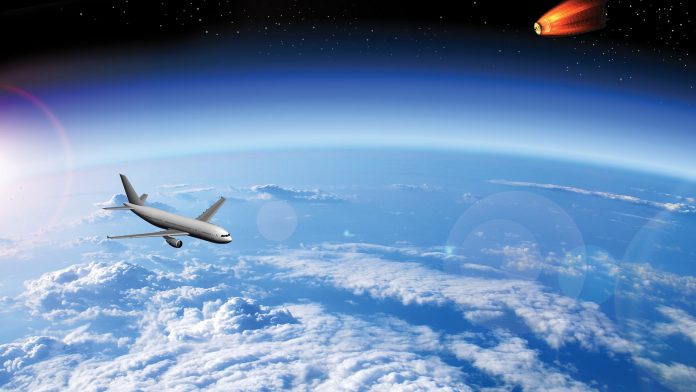Aviosonic Space Tech is developing revolutionary systems for aerospace safety, including an innovative debris collision alert system.
Aviosonic Space Tech has pioneered the first Debris Collision Alert System (DeCAS) for the monitoring of space vehicles and satellites as they re-enter Earth’s atmosphere. Avisonic’s patented space debris management system, DeCAS, addresses the vital issue of protecting people and institutions across the globe through a precise, efficient and cost-effective system which will make the world a safer place.
Today’s space debris environment poses a safety hazard to operational spacecraft, as well as a hazard to the safety of persons and property on Earth in cases of uncontrolled re-entry events. Approximately 13,000 objects orbit our planet every day. As of November 2015, more than 5,100 launches had placed some 7,200 satellites into orbit, of which about 4,100 remained in space; only a small fraction, about 1,100, are still operational today.1
For the majority of these objects, their disposal takes place as they re-enter the atmosphere, a requirement agreed upon by international accord. Knowing the exact location and extent of debris (or footprint), as well as the dynamics of the debris as it dissolves, is required so that all relevant authorities can be notified and therefore respond in a timely manner, and a debris collision alert system could make a real difference.
Debris Collision Alert System (DeCAS)
Aviosonic Space Tech, a dynamic high-tech company from Milan, Italy, has successfully tested a unique and cost-effective system for predicting exactly how and where all space debris will impact the planet whenever a breakup occurs.
The essential principle behind the system at Aviosonic (see: www.aviosonic.it) is based on a patented approach of tracking space debris area from the inside rather than from the ground or space. This space debris management approach centres on the Debris Collision Alert System, a small and lightweight device mounted on space vehicles and launchers which allows the system to track and model, in real time, the trajectory of the fragments and their impact area or footprint. This method of space debris tracking takes inspiration from the successful use of the well-known black box, used for aircrafts wreckage recovery, which is ideally suited for this far-reaching challenge.
The debris collision alert system works as a smart fragment which autonomously determines its position during re-entry and predicts the location of impact. During the re-entry phase of the space vehicle, i.e. satellite or rocket-bodies, the DeCAS unit is triggered by sensors and broadcasts the position and direction of the space debris to ground stations. This precise signal may instantly supplies the necessary data to all relevant agencies including civil authorities, military space organisations and air traffic control centres so that they may determine exactly how to direct and maintain whatever safety protocols are required for the affected footprint.
Aiming to be the standard
Piermarco Martegani, founder and president of Aviosonic, explains that the company’s mission is to have the device become standard for space debris management during the re-entry phase of all space vehicles components and therefore enhance safety and security across the world. Martegani, a professor in aeronautics who has an extensive background in space technology and thousands of flight hours on jets, goes on to explain that Aviosonic’s unique and ground-breaking technology will not only protect sensitive installations as well as air traffic and civilians from every nation, but is also by far the most economical approach yet conceived for the challenge. In other words, the DeCAS technology is not only a significant advancement in satellite debris security but is also the most cost-efficient and easy-to-install solution available today.
By implementing debris collision alert system technology, space vehicle operators and manufacturers no longer need rely only on the prohibitively expensive approaches offered by competing space technologies. Ground-based systems, such as the complex array of radar and laser stations used by the United States Space Surveillance Network, costs in the range of US$1.6 billion (~1.38bn), while space-based systems using orbiting satellites cost many millions and can only track the debris during some phases of re-entry. The design for demise techniques can’t guarantee the requirement to maintain the casualty risk on ground smaller than 10-4 imposing, amongst other things, stringent constraints at spacecraft system level.
In other words, these currently available options require tens of millions of dollars – if not hundreds – to project, maintain and operate, while the costs of DeCAS technology is only a fraction of this. Furthermore, by implementing DeCAS operators will substantially reduce the multi-million-dollar premiums currently paid to insurance companies for every launch.
A complementary technology
DeCAS can be also be implemented as a complementary technology to the current systems in place – both ground and space-based – to improve the space debris management system already in place. The system can easily be installed on any launcher to track debris in case of launch failure and/or break-up as well as reduce fuel requirements. It should also be noted that DeCAS can be implemented to improve the safety of all high-altitude/orbital commercial and tourist flights as this industry continues in development.
At present, DeCAS is the only space technology company that can precisely define the location of the falling debris in real time. In 2017, only two years after its inception, Aviosonic’s Space Debris Management System was tested as part of a D-SAT mission. The mission succeeded in demonstrating the system’s essential concept and communication abilities as well as validating its prediction capabilities. In its validation of the system, D-Sat’s ground operators submitted a series of messages which simulated an uncontrolled re-entry and DeCAS was able to process, in real-time, 98% of these messages in under 120 seconds.
During this 2017 DeCAS mission, Aviosonic also took on a key role in space education. The Ponti Institute, selected from among many others with space telecommunications experience, guided a group of students in setting up a ground station which received and analysed DeCAS messages and conducted practical exercises with this data. Those students in charge of telecommunications set up the hardware to receive the satellite signal and built a special tracking motor antenna to track the satellite and process messaging, while the computer science students worked on signal decoding and processing the messages for the data-base. This collaboration will continue with the second DeCAS mission, scheduled for 2019, during which Aviosonic will test updated components.
Network
In Aviosonic’s brief history, this start-up has created a reliable network of partners in the space sector working on the development and production of DeCAS in countries around the world as well as establishing effective business relations in the implementation of the system. This has been accomplished through targeting private capital as well as earning funding through national and European public agencies. It is through Aviosonic’s prudent investment strategies that this technology can now be applied to both the space and aeronautical fields in supporting operators and manufacturers in all requirements and guidelines of international space agencies.
The Aviosonic team is composed of a mix of highly skilled technology professionals in the space and aeronautic sectors, as well as business- and market-oriented experts. As a start-up company, Aviosonic has been able to develop this working prototype of DeCAS as well as participate in the D-SAT space mission with a selected group of partners who validated the DeCAS solutions, all of which was achieved in just under three years.
Aviosonic is the first company to develop and patent the ‘inside’ space debris tracking approach in handling the ongoing problem of space debris, specifically because we are the only company to focus on the re-entry phase. By precisely determining the size and location of the space debris through an efficient and effective system, Aviosonic offers a cost-effective solution system to operators of every nation, at a fraction of the cost provided by any other system, in the pursuit of protecting the lives and well-being of everyone.
References
- Source: ESA

Aviosonic Space Tech
Via Larga 15
Milan – Italy
Mail: info@aviosonic.it
www.aviosonic.it







